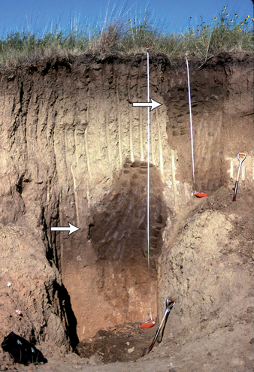Several years ago, the City of Hastings tapped the University of Nebraska’s Water Sciences Lab (WSL) to help better understand the quantity and movement of growing concentrations of nitrate and other agrichemicals stored underground near the city’s wells. Specifically, the city wanted the lab’s expertise in collecting and analyzing soil samples from the vadose zone – the layer between the land surface and groundwater table that acts as a skin of the earth and is key to regulating groundwater recharge and chemical movement. With more understanding of what’s happening in this zone, the city can better predict groundwater contamination and how to implement interventions at the source.
Following years of study, the results are now in. In concert with the Nebraska Water Center and Hastings Utilities, the lab recently released “Vadose Zone Nitrate-N Study: Final Report.” The 158-page report offers a detailed analysis of current masses of nitrate and pesticide in the vadose zone within the Hastings Wellhead Protection Area; estimated travel time from land surface to groundwater for various scenarios; and estimated potential for denitrification in the vadose zone and associated groundwater.
Hastings Utilities Environmental Supervisor Marty Stange has been a key partner throughout. He believes the report will be useful to help the city ensure current and future water quality.
“This allows us to better understand where we need to implement best management practices. The future for us is to look at a contaminant’s rate of travel through that vadose zone and what we can do to control it,” Stange said.
In Nebraska, four of every five residents get their drinking water from groundwater. At 25,000 residents, Hastings is one of the larger municipalities in Nebraska with concerning nitrate contamination. But it’s a concern shared by towns and cities across the state. This helped motivate the NWC and WSL to create the Nebraska Vadose Zone Program – a one-of-a-kind agrichemical data repository to help manage and improve the state’s groundwater and drinking water quality. The Hastings sites are part of over 300 statewide whose data is available through the repository.
“The Nebraska Vadose website provides data directly to NRD managers and utilities managers who are determining land use and cropping management policies to reduce nitrate and agrichemical loading to the water table,” said Dan Snow, a co-author on the Hastings report and director of services at the WSL.
In addition to Snow, the report’s authors include NWC Director Chittaranjan Ray; WSL Postdoctoral Research Associate Arindam Malakar; NWC Postdoctoral Research Associate Jahangeer; and UNL School of Natural Resources graduate student Craig Adams.

